Abstract
Much of the statistical analysis of biological data depends on the assumption that the data are Gaussian (or normal). Some well-known procedures which use this assumption are (i) t-tests (ii) analysis of variance (iii) regression estimation and their attendant tests. If the data are not Gaussian, one can use nonparametric statistical techniques, if they exist, but they often require larger amounts of data to obtain equally precise results (see for example Lumsden and Mullen (7) for a discussion of this with regard to reference value estimation). If the data are not Gaussian a fruitful approach to their analyses lies in trying to find a transformation which will render tham Gaussian. The data thus transformed to a Gaussian form, can be analyzed validly using standard statistical techniques. The process of finding a good transformation of the data has often been an arbitrary and ad hoc one. The purpose of this article is to look at a particular technique for attempting to render nonGaussian data Gaussian, and to illustrate its applicability and breadth of use.
Full text
PDF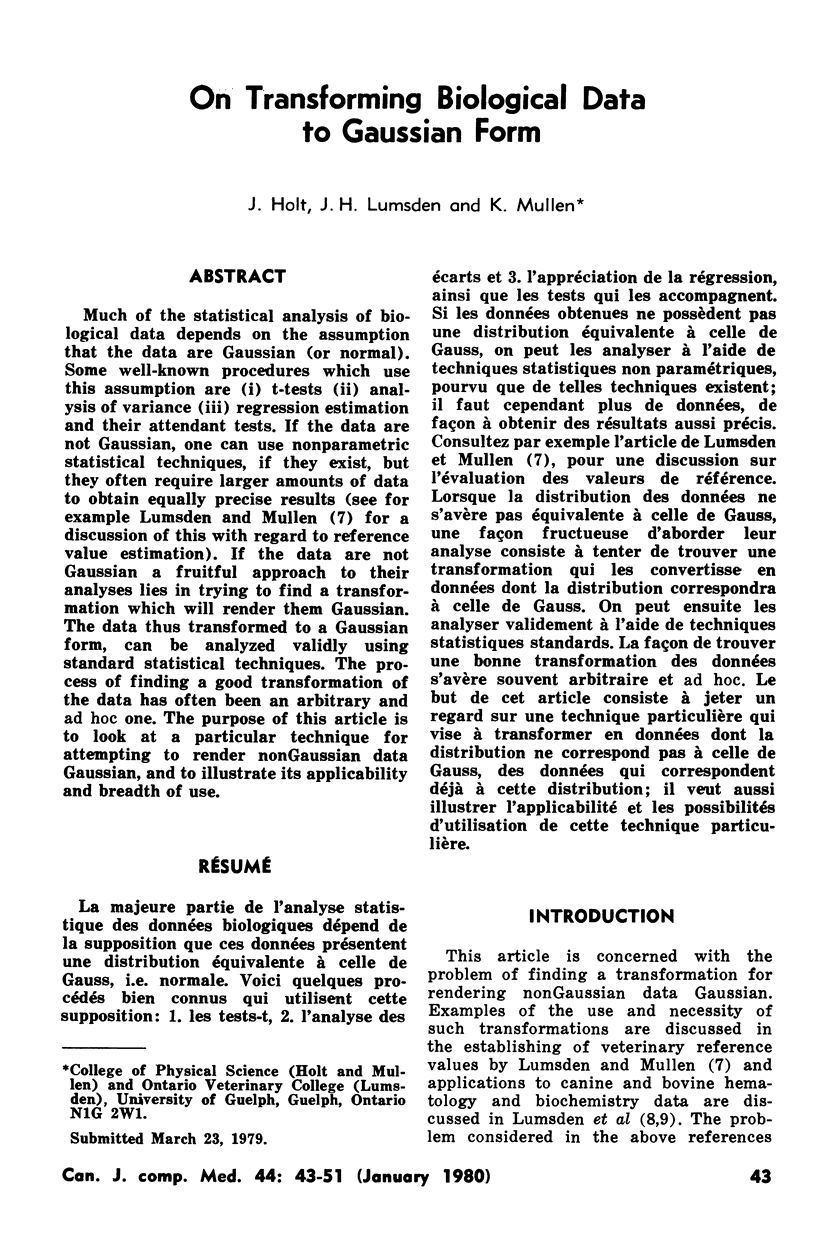
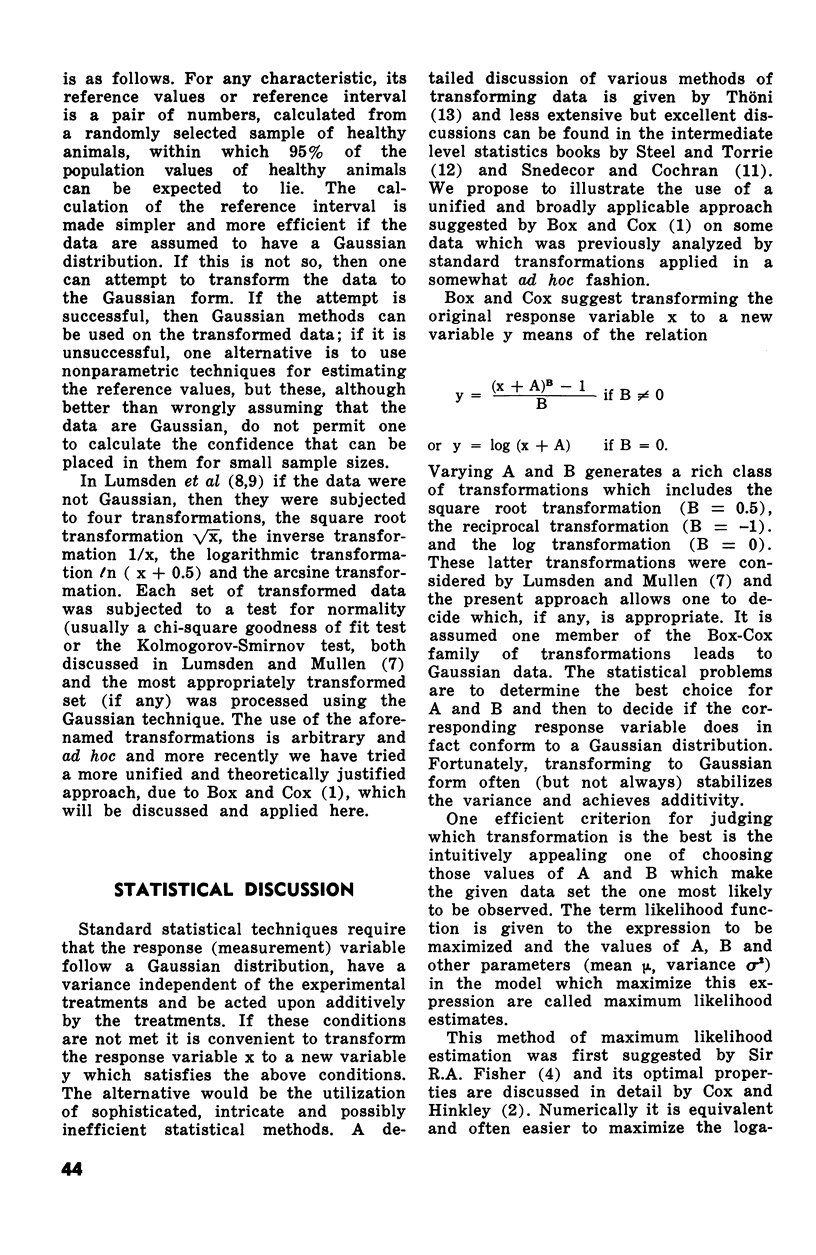
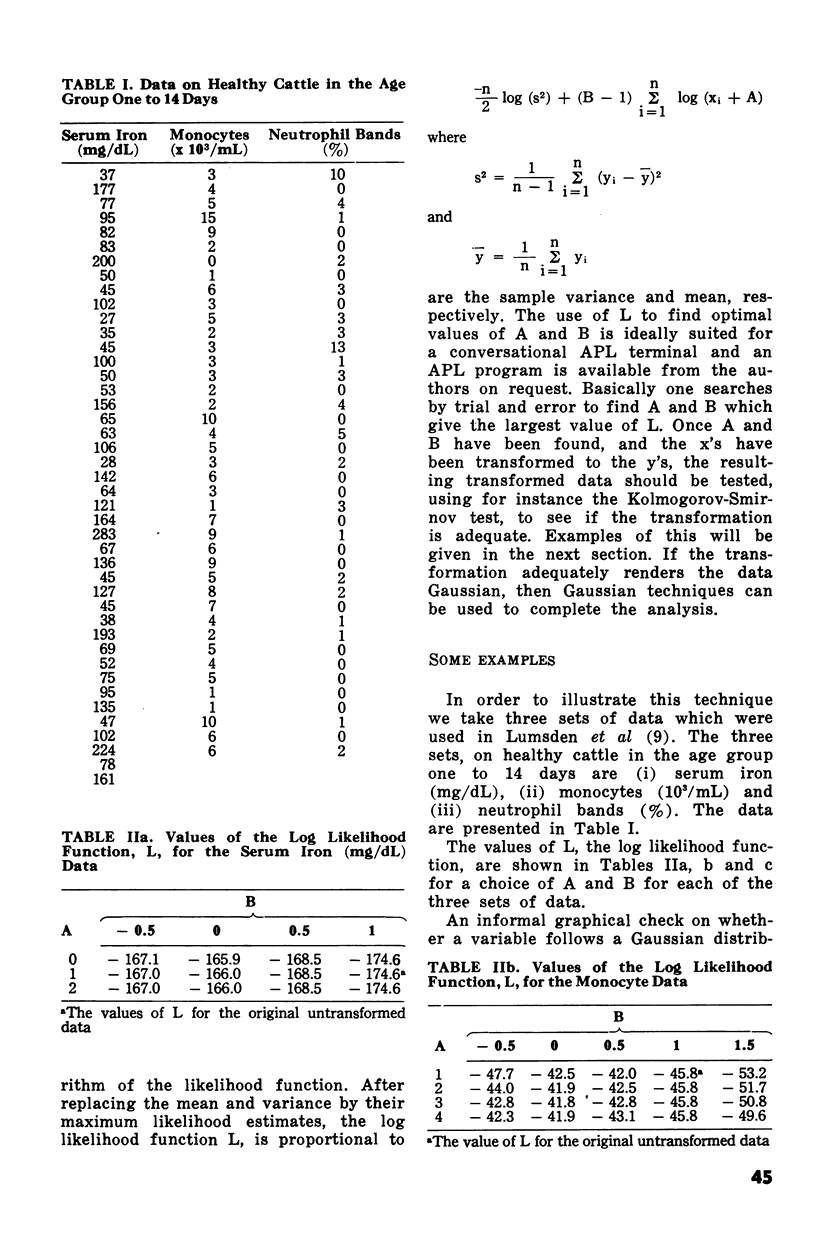
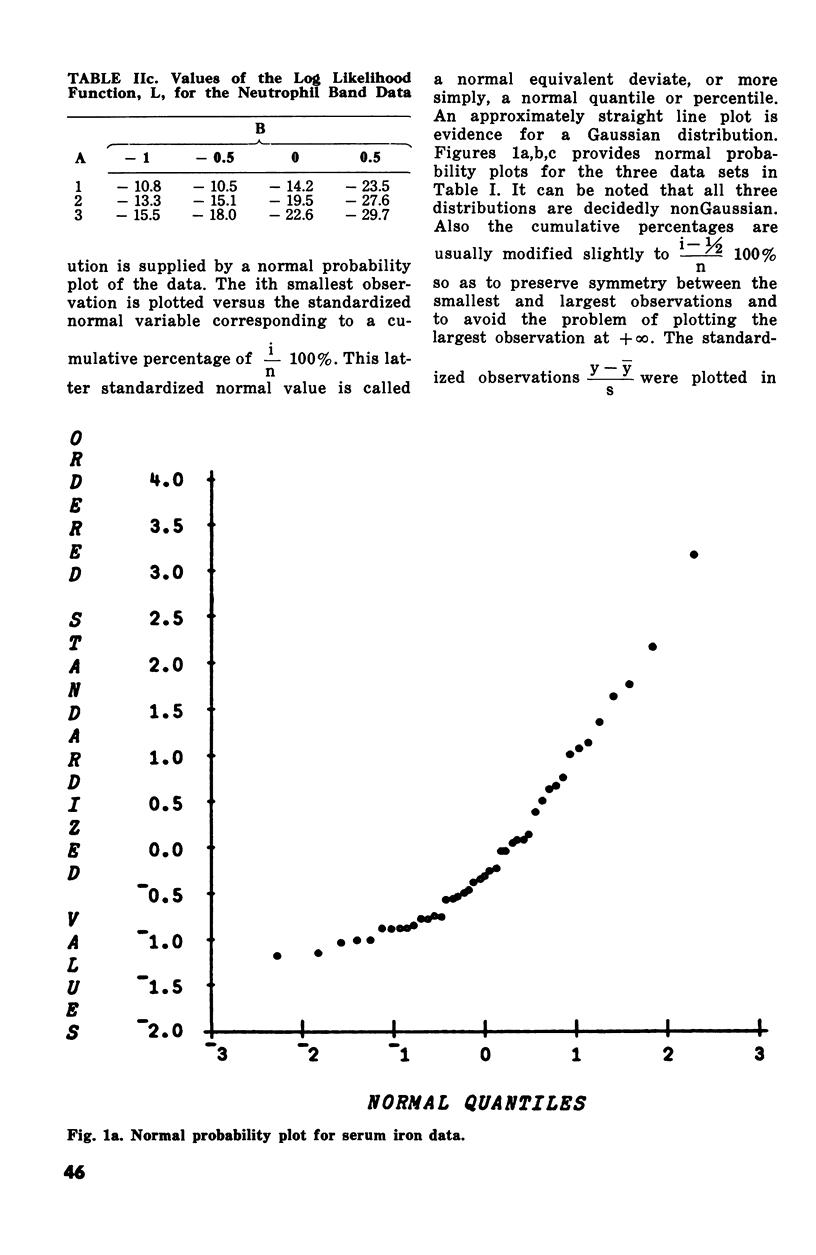
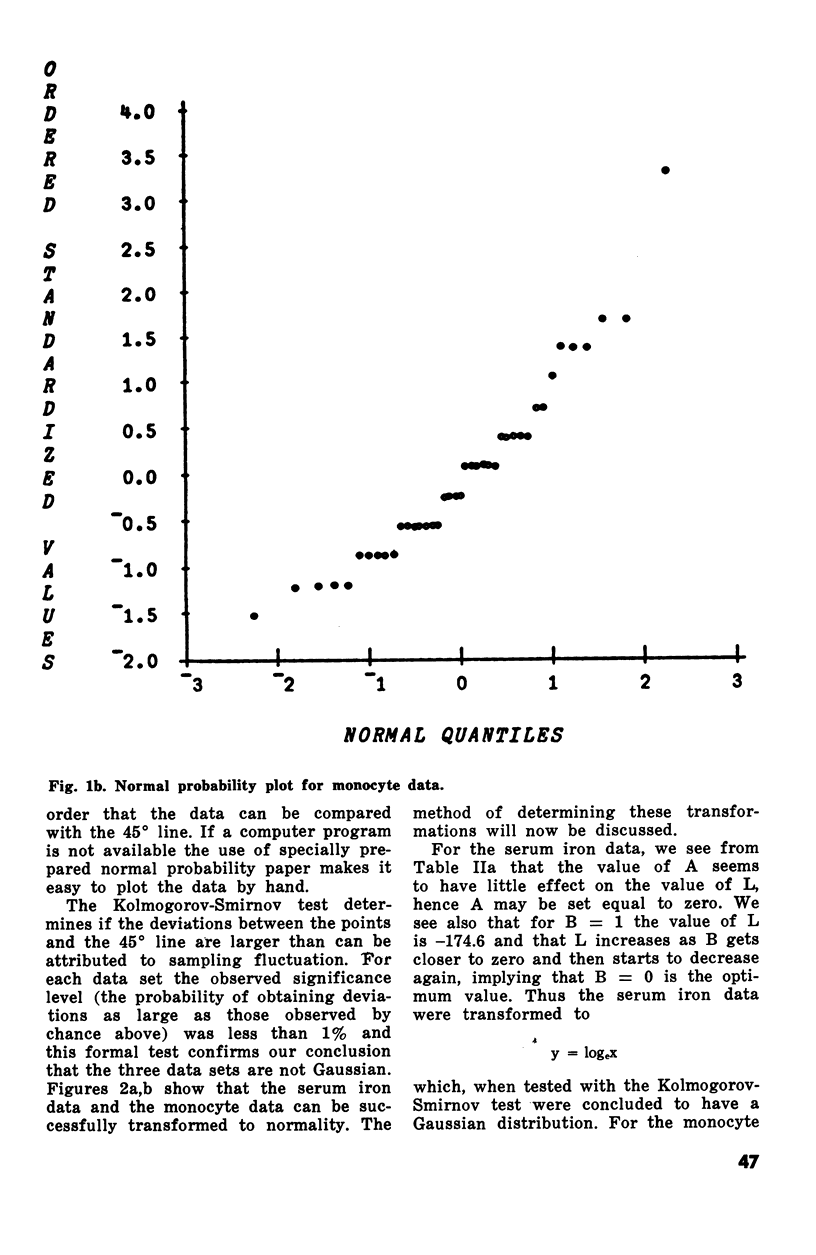
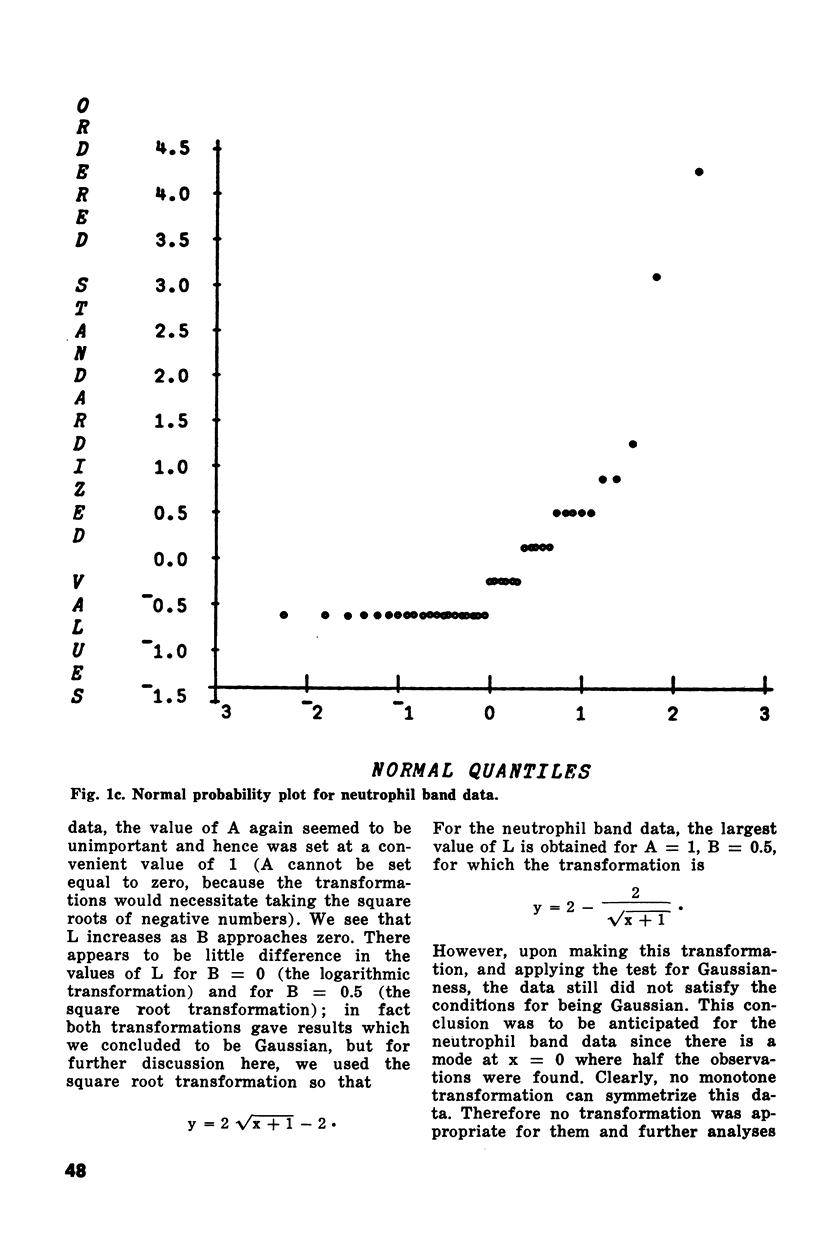
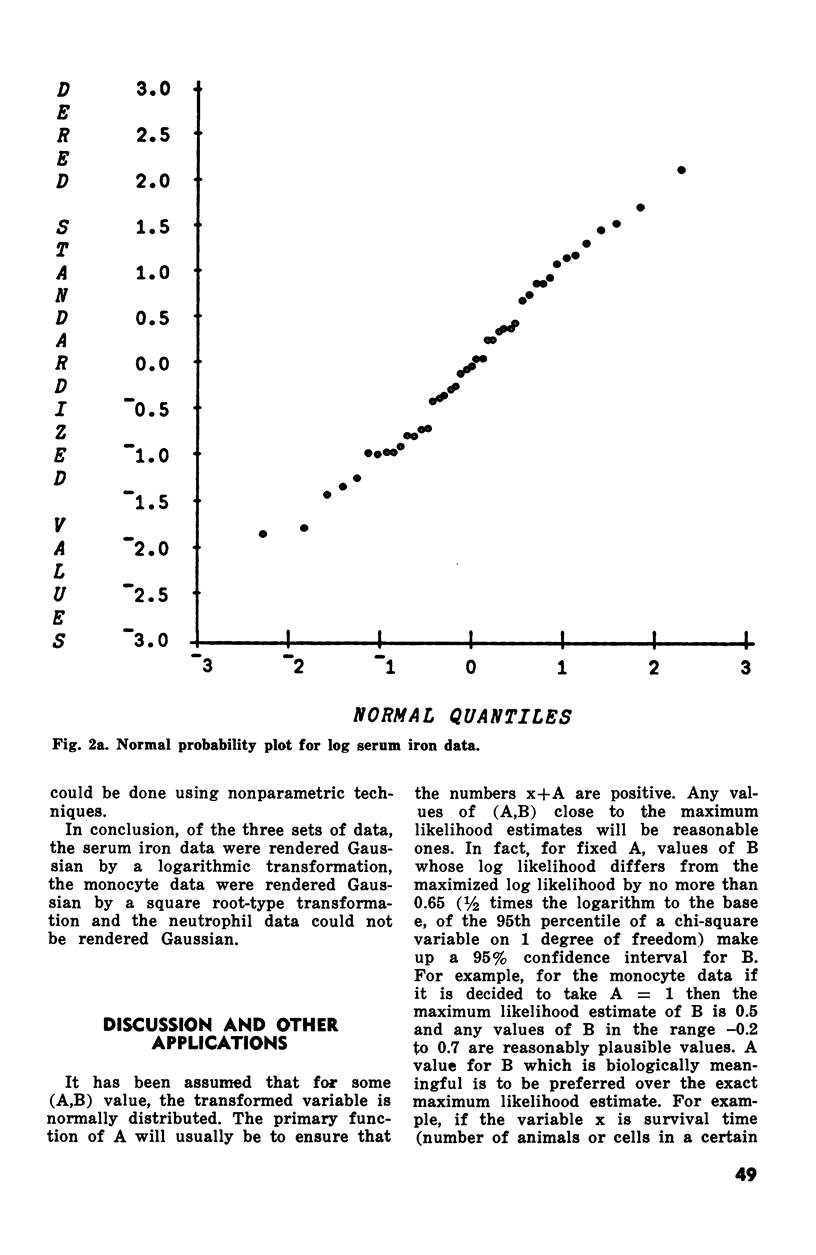
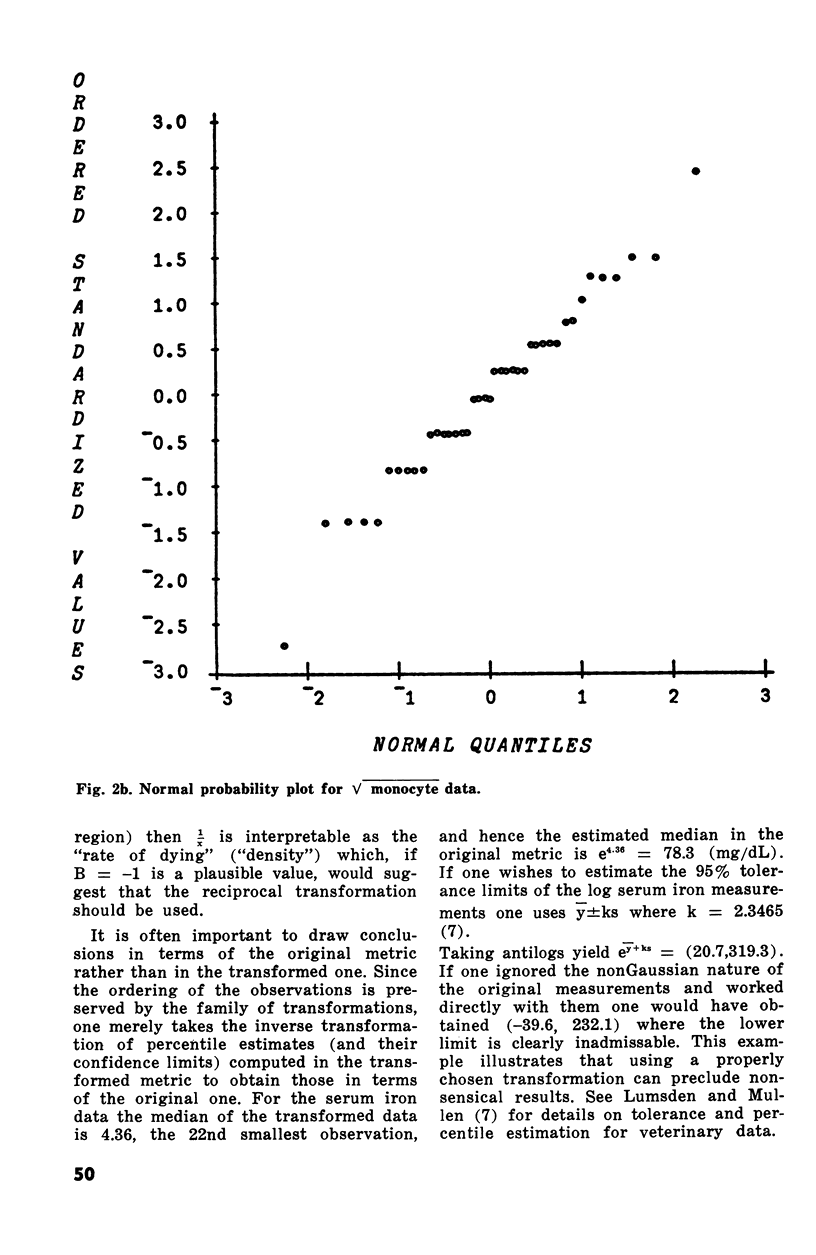
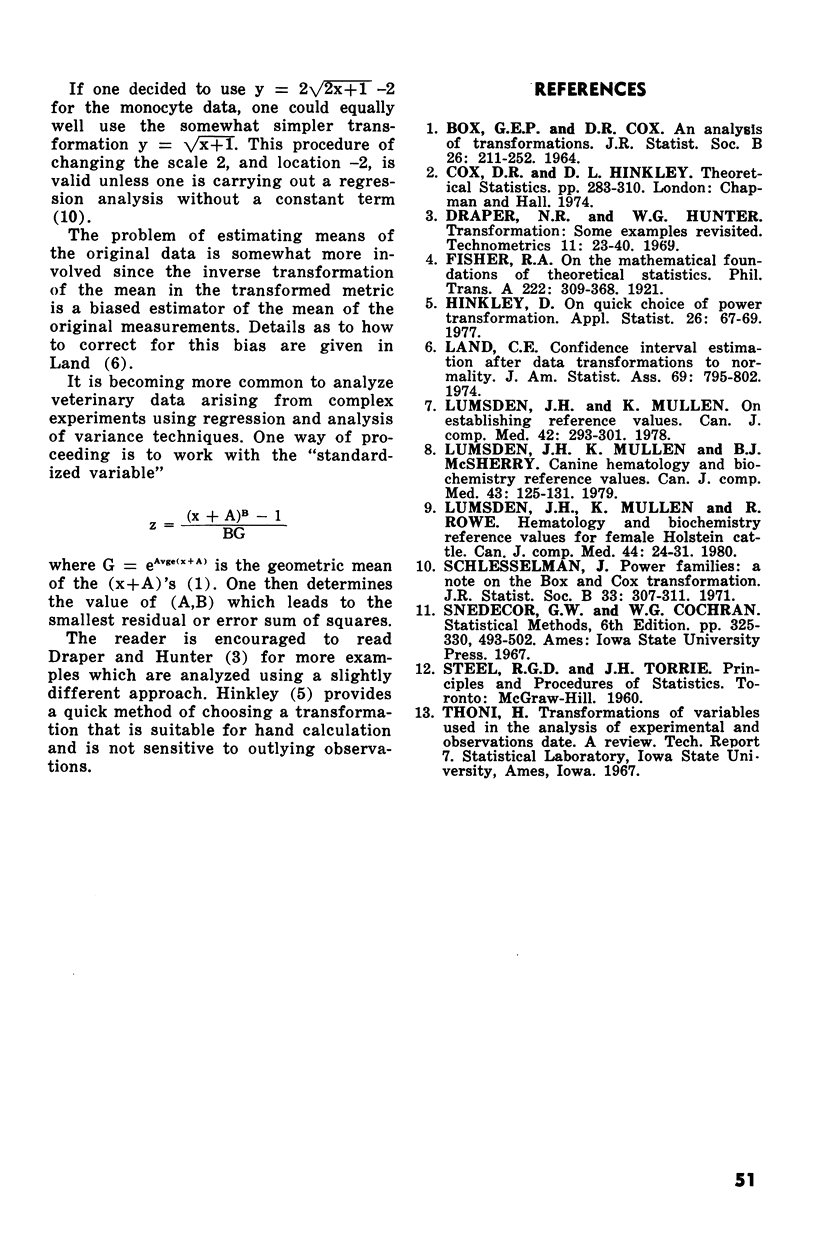
Selected References
These references are in PubMed. This may not be the complete list of references from this article.
- Lumsden J. H., Mullen K., McSherry B. J. Canine hematology and biochemistry reference values. Can J Comp Med. 1979 Apr;43(2):125–131. [PMC free article] [PubMed] [Google Scholar]
- Lumsden J. H., Mullen K. On establishing reference values. Can J Comp Med. 1978 Jul;42(3):293–301. [PMC free article] [PubMed] [Google Scholar]
- Lumsden J. H., Mullen K., Rowe R. Hematology and biochemistry reference values for female Holstein cattle. Can J Comp Med. 1980 Jan;44(1):24–31. [PMC free article] [PubMed] [Google Scholar]


